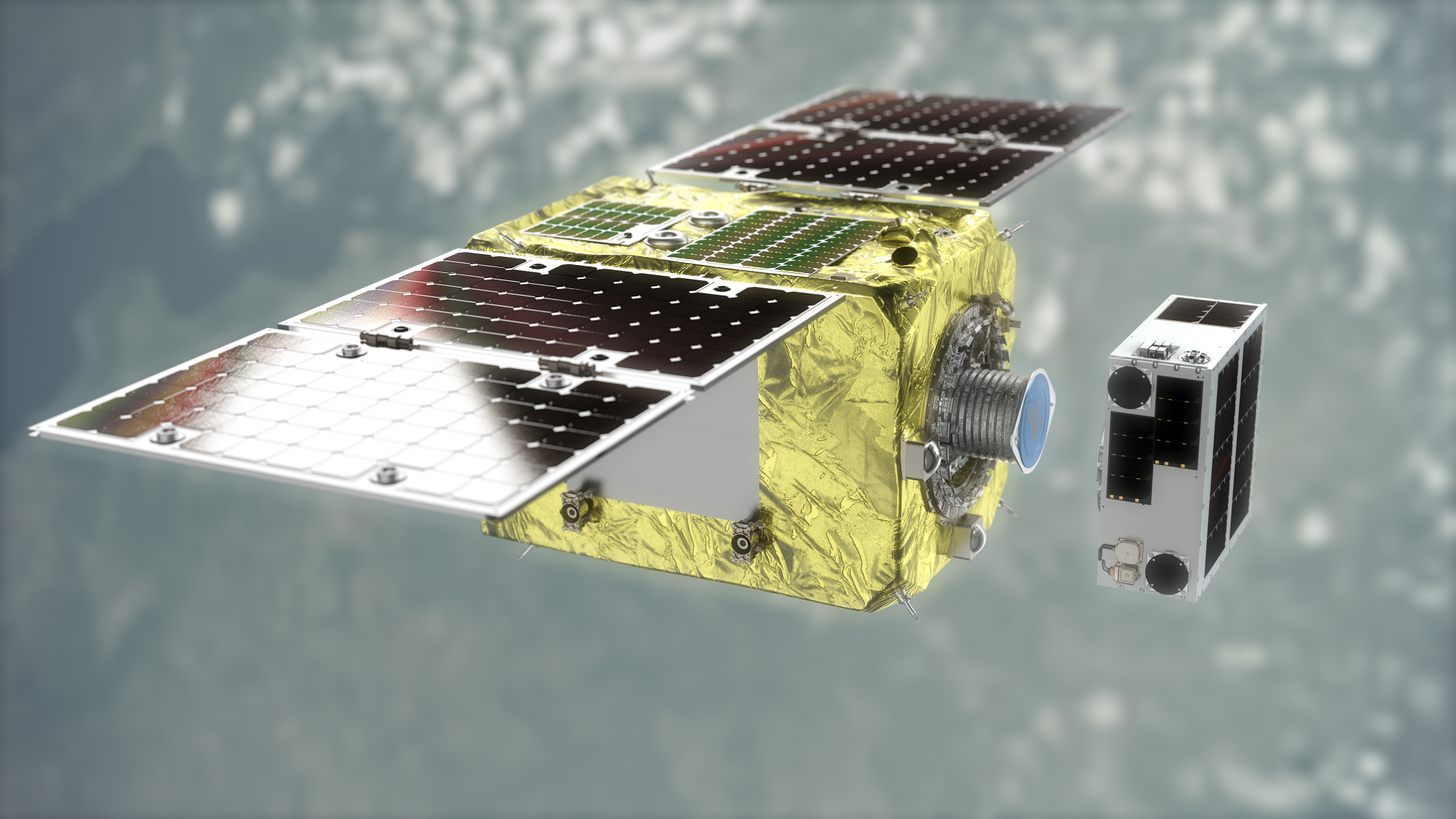
Astroscale has been forced to reduce its expectations for the ELSA-d on-orbit active debris removal technology demonstration after failing to resolve an issue that resulted in the loss of four of the servicer spacecraft’s eight maneuvering thrusters.
The Japanese startup said April 6 that it had resolved or mitigated most of the spacecraft anomalies experienced in January that caused it to halt an autonomous capture demonstration in low Earth orbit.
But Astroscale said it had been unable to resolve technical issues that resulted in four of the servicer’s eight 1-newton HGHP (high performance green propulsion) thrusters becoming non-functional. The HGP thrusters were supplied by Sweden-based Bradford ECAPS.
“These issues do not relate to and are not a result of the design or build of the thrusters and we have full confidence in our products,” Bradford said.
The planned demonstration involved a rendezvous and docking of the servicer with a small, unpowered client satellite released by spacecraft to simulate orbital debris. Failure of the thrusters “has impacted our ability to perform a capture of the client as planned,” the startup said.
The ELSA-d team used “a complex mix of burns with the remaining thrusters, aerodynamic drag and the natural perturbations of the Earth’s gravity” to bring the servicer back to a safe distance from which it can continue operations. Astroscale described the steps taken as “challenging and unprecedented.”
The team now plans a controlled close approach in which it will maneuver the servicer to a distance of 160 m (525 ft.) for the client to validate the ability of the servicer’s low-power radio sensor to detect and track the client. This will enable a transition from absolute to relative navigation.
Success in this descoped demonstration would be an “important advancement” for rendezvous and proximity operations, Astroscale said. After the demo, the team plans to maneuver the servicer to a safe distance from the client while it evaluates the potential for “a safe and viable recapture plan.”
Launched in March 2021, the ELSA-d mission conducted an initial test capture of the client in August 2021 and in January demonstrated autonomous relative station-keeping by the servicer.
[Editor's Note: This story was updated with comments from Bradford ECAPS.]





